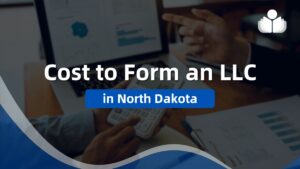Guidelines for accomplishing nonprofit capacity building are included in the books Field Guide to Consulting and Organizational Development with Nonprofits, Strengthening Nonprofit Performance: A Funder’s Guide to Capacity Building and Coping With Cutbacks: The Nonprofit Guide to Success When Times Are Tight.
Edited by Carter McNamara, MBA, PhD
(This organizational assessment tool can be completed online for free.)
Description
The following checklist is a resource developed by staff and volunteers of the United Way of Minneapolis Area for internal use by nonprofit organizations. Management can use the checklist to identify their organization’s administrative strengths and weaknesses. United Way staff and community volunteers intend this to strengthen their administrative capabilities. It is believed that widespread use of the checklist ultimately results in a more effective and efficient nonprofit community. The checklist is not intended to be used as a tool for external evaluation, or by grantmakers in making funding decisions. This tool will be used to assist nonprofit organizations to gain a better understanding of their management needs and/or making improvements to management operations.
This checklist includes the following sections:
- How to Use the Tool
- Disclaimers
- Legal Indicators
- Governance (Board) Indicators
- Human Resources Indicators
- Planning Indicators
- Financial Indicators
- Fundraising Indicators
Also, consider
Related Library Topics
How to Use the Tool
The checklist indicators represent what is needed to have a healthy, well-managed organization. Since it is a self-assessment tool, organizations should evaluate themselves honestly against each issue and use the response to change or strengthen their administrative operations.
Ratings:
Each indicator is rated based on its importance to the operation and effectiveness of any nonprofit organization. The ratings are:
- E: Indicators with an “E” are essential or basic requirements for the operations of all nonprofit
organizations. Organizations that do not meet the requirements of these indicators could place their organizations in jeopardy. - R: An “R” rating signifies that these indicators are recommended as standard practice for effective
nonprofit organizations. - A: Additional indicators which organizations can implement to enhance and strengthen their management operations and activities are rated with an “A”.
Checklist Responses:
Organizations can respond in one of three ways to each indicator used:
- Needs work – An indicator that is marked as “Needs Work” implies that work has been done towards achieving this goal. The organization is aware of the need for this indicator and is working towards attaining it.
- Met – All indicators marked as “Met” demonstrate that the organization has fulfilled an essential management needs. However, the organization should review these indicators in the future to be sure that their management remains healthy in view of the many internal and external changes which constantly occur in all organizations.
- N/A – Indicators marked as “N/A” can mean several things, including:
- the indicator is not applicable to the management operations of this organization
- the organization is not sure of the need to meet the requirements of this indicator
- the organization has not met, nor is working on this indicator presently, but may address it in the future
All organizations should take note: All responses to indicators should be reviewed carefully to see if they could improve management operations. Indicators checked “N/A” due to uncertain applicability to the organization must be further reviewed to determine if they should become a part of “doing business.” If the assessors simply do not know what the indicator means, further information may be needed to accurately assess the feasibility of its application. Indicators marked “N/A” because they have not been met but that apply to the organization, may require immediate attention. Technical assistance, consulting,
or training may be required to implement these indicators.
The indicators in this checklist should be informative and thought-provoking. The checklist can be used to achieve not only a beginning level of good management but improve existing management to provide the organization with greater stability, reliability, and success in the nonprofit community. It is also useful too if an organization is experiencing management problems, to help pinpoint any weaknesses so action can be taken or assistance sought to improve the organization’s health. All organizations should use the checklist to re-assess themselves periodically to ensure compliance with established rules and regulations, and to continue improving administrative health through the indicator’s helpful suggestions.
Disclaimer
This checklist is designed to provide accurate and authoritative information regarding the topics covered. Legal requirements and non-legal administrative practice standards reflected herein are capable of change due to new legislation, regulatory and judicial pronouncements, and updated and evolving guidelines. All stated legal requirements are in effect as of September 1, 1995. The same is utilized with the understanding that the provision of this checklist does not constitute the rendering of legal, tax, or other professional services.
If the organization requires professional assistance on these or other nonprofit tax, management, or accounting issues, please contact your own professional advisors.
This information may be copied. Please cite credit to the Greater Twin Cities United Way.
For the Category of Organizational Development:
To round out your knowledge of this Library topic, you may want to review some related topics, available from the link below. Each of the related topics includes free, online resources.
Also, scan the Recommended Books listed below. They have been selected for their relevance and highly practical nature.
 Sections of this topic
Sections of this topic
















